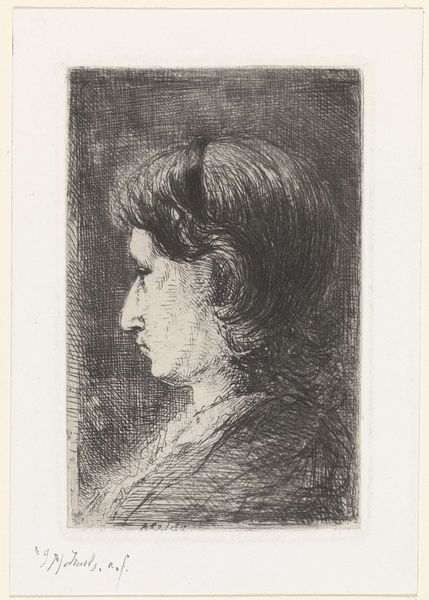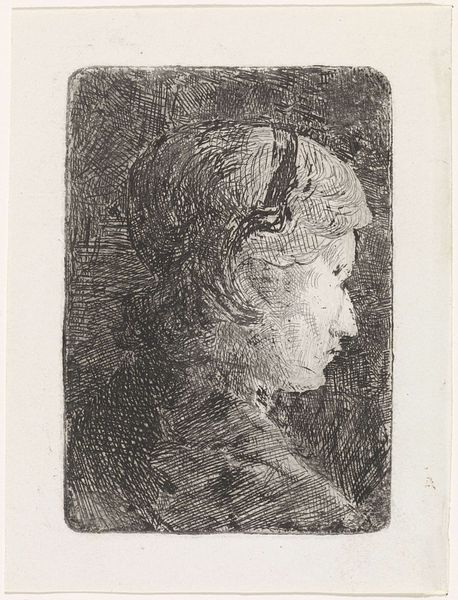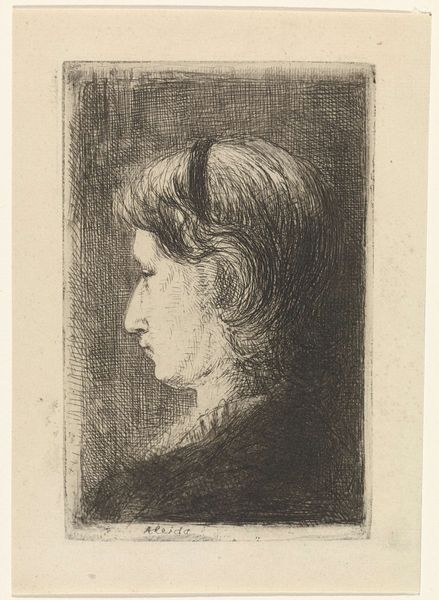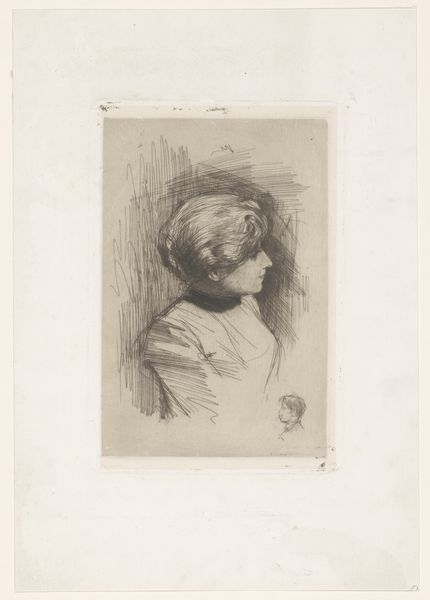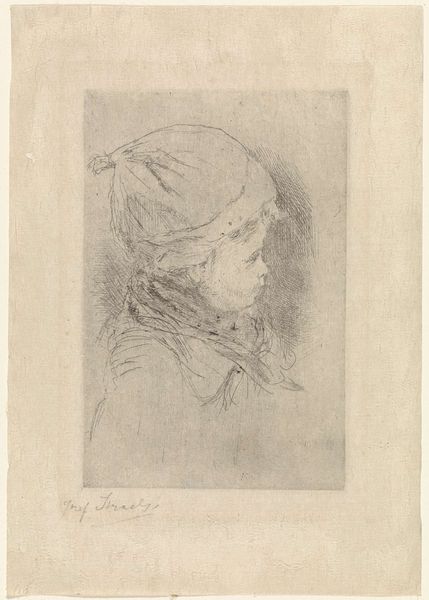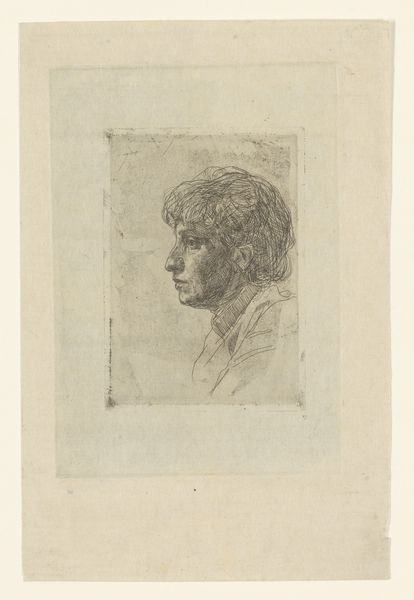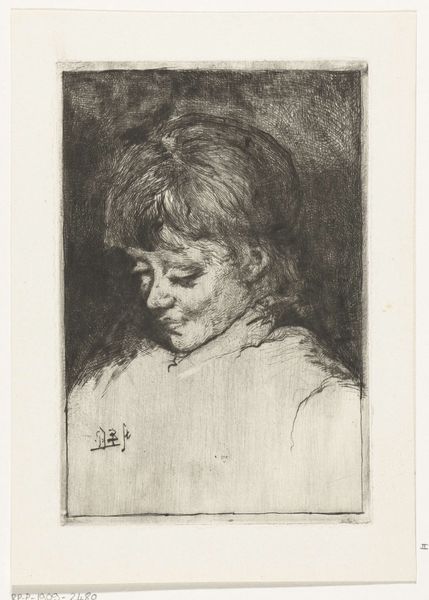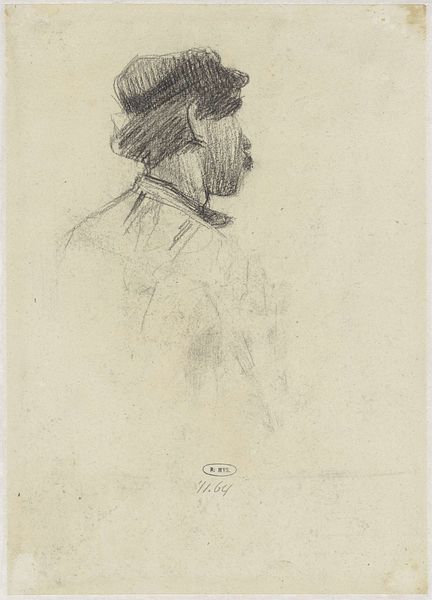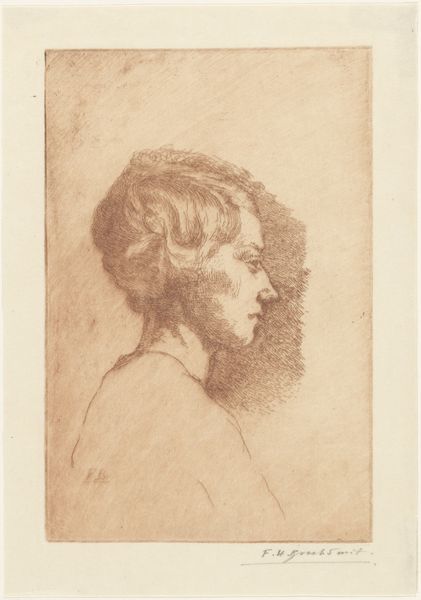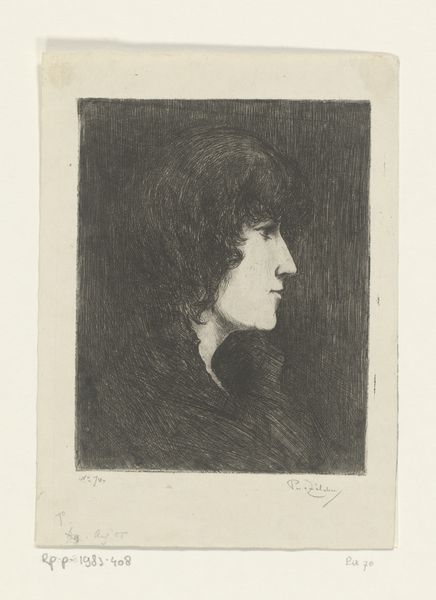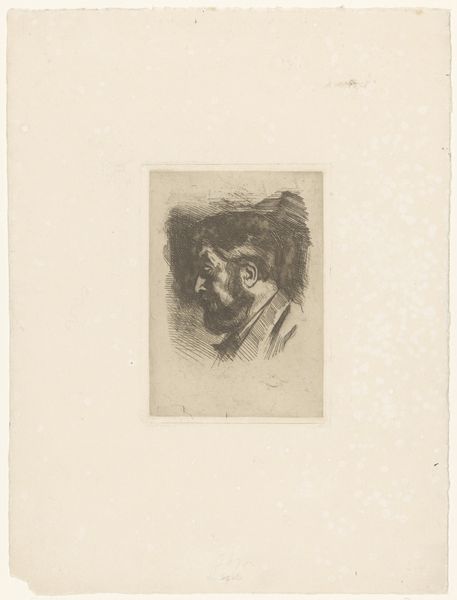
print, etching
#
portrait
# print
#
etching
#
old engraving style
Dimensions: height 120 mm, width 78 mm
Copyright: Rijks Museum: Open Domain
Editor: This is Jozef Israëls’ etching "Portret van Aleida Schaap," made sometime between 1863 and 1878. The tight cropping really puts the focus on the sitter’s profile. What are your initial thoughts about its visual construction? Curator: I note the rigorous adherence to tonal modulation within a limited grayscale. The etching technique here demonstrates masterful control, generating depth and texture despite its modest scale. The subtle gradations around the face draw our attention to the lines. Editor: What strikes you most about the use of line and tone? Curator: Observe how the directionality of the etched lines creates the illusion of form. The artist coaxes dimensionality from a two-dimensional surface. I also observe how the density of the hatching dictates the amount of light reflected by the paper, influencing the perceived volume. Editor: Are there certain qualities in the marks themselves? Curator: Consider the nervous energy within those marks, balanced against the stillness of the profile itself. Note how the regularity and the variety of lines contribute to visual rhythm, directing the gaze through the image and providing a palpable tension. Editor: That is very well observed! Curator: Indeed. By understanding the relationships between the marks themselves and how the artist deployed them we understand something intrinsic to this portrait.
Comments
No comments
Be the first to comment and join the conversation on the ultimate creative platform.
